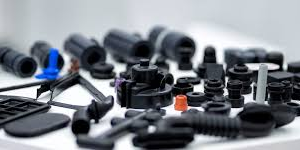If you are planning to create a part, you should consider the different moulding processes available. Each process has its own advantages and disadvantages, so choosing the right one depends on the type of product you’re creating. Listed below are some of the main factors to consider when selecting the moulding process for a product.

Injection moulding is a very accurate method, but it does come with some restrictions. Injection moulding is not ideal for hollow products as it requires a solid component. Parts with walls thinner than 3mm are better suited for this process. However, parts with thicker walls may have problems with shrinkage. In general, the process is best suited for high volume productions, as it is highly repeatable. To find out more about UK Rubber Moulding, visit a site such as meadex.co.uk
Surface finish will determine the material used for the mould. A smooth surface will allow paint to peel off more easily, but a rough surface will ensure better adhesion. Textured surfaces also increase the strength of the part and make it safer to use. The surface texture is important because it affects the cost of tooling and the design of the mould. Texturing any surface can also add pull.
Choosing a moulding process can be complex, but it is a worthwhile investment for your product’s future. You’ll need to consider the design of the mould as well as its complexity, to make sure it meets your specifications. Once you’ve determined the material, you’ll need to determine its manufacturing properties. Different materials have different melting and cooling points, which can help you avoid cavities and sinking.

Casting is another common type of moulding. The process involves pouring a liquid into a special mould cavity. Once the workpiece is solid, it is removed from the mould, where it can undergo finishing treatments and eventually become a finished product. Cast products are popular in many industries, from toys to car parts. Aside from toys, the cast products are also used in medical applications. If you have a large product, you can consider using metal or sand moulding.
If you need a plastic part with a high-quality finish, injection moulding is a good choice. It is a fast, efficient method for producing large quantities of parts. However, it is expensive and requires a stable design. A product that’s moulded with injection moulding techniques is more difficult to make if it has to be modified later. Injection moulding also requires expensive tooling, so it’s a good option if you have a high-volume product.

